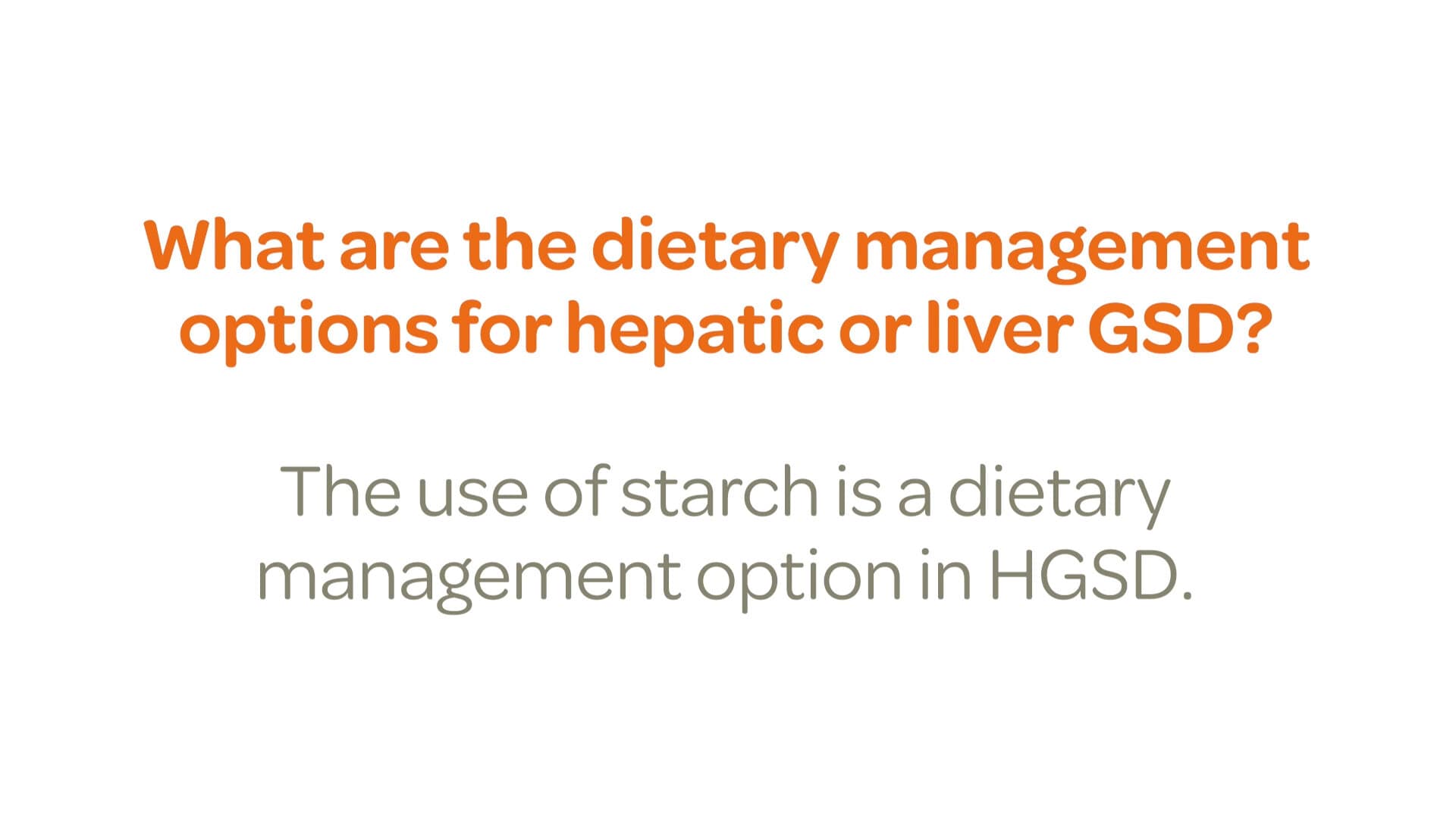
Welcome to GSD & Me
The content of this website is intended for UK patients. Information concerning liver Glycogen Storage Disease management is based upon UK practice. As dietary management may vary in different countries, please speak to your metabolic team at the hospital for individualised advice for your GSD.


The main aims of management are:
- prevention of hypoglycaemia (low blood glucose level)
- normal growth
- healthy lifestyle
In a lot of cases, all of this can be successfully achieved through dietary control. In some cases, you may need medications or other medical treatments alongside your dietary management.
Some centres recommend monitoring of your blood glucose levels although others think it is better to monitor symptoms and behaviour as a guide to your blood glucose levels.
A key thing to remember is that your management plan is individualised to meet your needs and lifestyle.
Regular eating
The most important aspect of managing a liver GSD is to avoid long gaps between meals and snacks. Your Specialist Metabolic Team (SMT) will advise you on how often you should eat.
In addition to regular meals and snacks during the day, it may be necessary for you to eat cornstarch.
During the night, an overnight feed or some overnight starch may be required.
Cornstarch
Cornstarch is another name for the cornflour you find in supermarkets. Cornstarch, when eaten in its raw uncooked state, it is slowly digested. This leads to a slow, steady release of glucose into the blood.
This means it can keep blood glucose levels within safe limits for longer than eating other foods would. The simplest way to consume starch is to mix it with cold water and drink it immediately. Some people prefer to mix it with suitable cold foods or drinks to make it easier to take. Check with your dietitian before adding it to foods or drinks, as they may not be suitable for you.
The number one rule with starch for GSD is that you must not heat it, or mix it with warm or hot food or drinks, as this reduces its effectiveness.
Glycosade
In the last ten years, Glycosade, another type of cornstarch has become available from your SMT.
Tube Feeding
In some cases a feeding tube may be required to help you maintain your blood glucose levels within a safe range.
If you have any questions about tube feeding, please speak to your SMT.
Managing illness
With a liver GSD, when you become unwell it becomes harder to keep your blood glucose levels within the safe range. This is especially true if you are vomiting and/or have diarrhoea.
This is when an emergency regimen or ER is required.
ERs are glucose polymer drinks. They are used to give you all the energy that you find in sugar but without the sweet taste.
Normally you would make an ER by mixing a glucose polymer powder with water. Your SMT will provide you with more information on what an ER is and how it should be used.
Keep the recipe for your ER in a safe place that is easy to find when an emergency arises.
ERs are individualised and they will change as you get older. When you get a new recipe for an ER, discard the old one.
If you cannot drink your ER, or vomit after taking it, you need to go to hospital. There you’ll be given an intravenous dextrose infusion (or drip) to keep your blood glucose levels within the safe range.
The drip will be stopped when you are eating and drinking normally again.
Some healthcare professionals will have little or no experience of glycogen storage disease. So it helps to bring all your paperwork to help inform the Doctors and Nurses there. This typically include written explanations of GSD and contact numbers for your SMT, so that the drip is started without delay. If you need to go to a smaller, local hospital who are not familiar with your condition, this is particularly important.
Recognising hypoglycaemia
Learning how to recognise hypoglycaemia (low blood sugar levels) is important for individuals with GSD and their parents, family, friends and acquaintances. Some of the common signs include:
- Irritability and other behaviour changes
- Sweating
- Turning pale
- Dry mouth and lips
Hypoglycaemia can be triggered by:
- Missed meal, snack or starch dose
- Illness
- Growth spurt – your diet may need to be reviewed

Blood glucose monitors
Although not yet available everywhere, more individuals with GSD are using a system called Continuous Glucose Monitoring (CGM) to monitor their blood glucose levels at home. CGM can help alert an individual to the risk of an imminent hypo, allowing corrective action to be taken earlier. CGM is a more reliable indicator of a low, or borderline low, blood glucose level than relying solely on how the individual feels at the time.
Where used, the SMT can use CGM data to better advise on fine-tuning the individual’s diet to ensure they stay in good control of their blood glucose levels. For example, if the CGM shows that an individual is regularly experiencing hypos, or borderline low blood glucose levels, at a certain point in the week, the SMT can advise on dietary changes to stop this.

